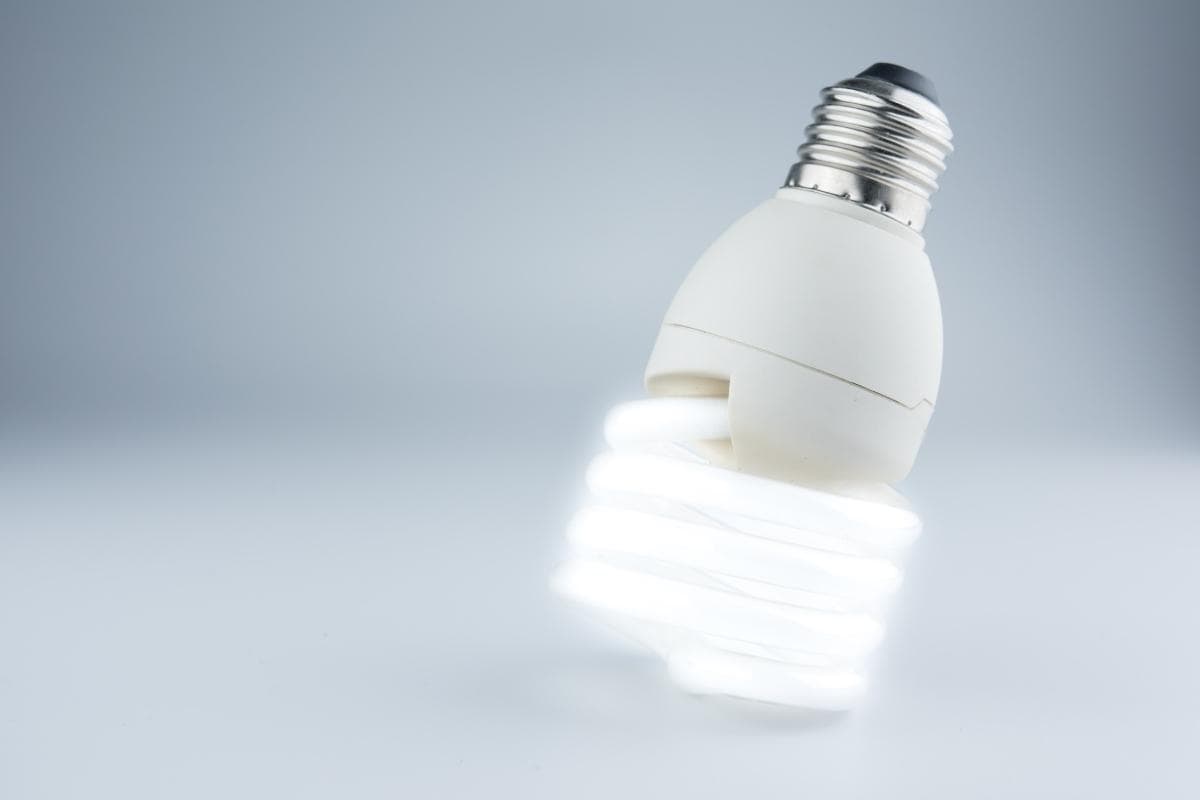When shopping for bulbs and lamps for our home lighting designs, we often see these different terms labeled on the package and mentioned by manufacturers – Lumens, lux, candela, foot-candle, and sometimes candlepower. What do these terminologies mean? What’s the difference and which term to actually look for when choosing your ideal light source?
Here are explanations and comparisons of the common terms you’ll see related to how bright a light source looks in various situations.
Quick Facts
Here are some common terms we’ll frequently mention in the article. A quick look at the simplified explanation will help you easily understand the relationships between lumens, lux, and candela.
- Luminous Flux: A measure of the total amount of visible light a light source emits. The unit of luminous flux is lumen, with the symbol lm (= cd⋅sr).
- Luminous Intensity: A measure of luminous power emitted by a light source in a particular direction. The unit of luminous intensity is candela, with the symbol cd (= lm/sr).
- Illuminance: A measure of total luminous flux illuminates onto a surface. The unit of illuminance is lux, with the symbol lx (= lm/m2)
- Brightness: Although the original meaning of “brightness” is Luminance. As FTC has assigned an unconventional meaning to brightness when applied to lamps and bulbs, brightness means luminous flux in the context of light bulbs and lamps.
What Is Lumen
Lumen(symbol: lm) is the unit of luminous flux, a measure of the total quantity of visible light emitted by a source per unit of time. Simply put, the lumens mean how much light a light source can emit in all directions. The higher lumens, the brighter the light source looks to human eyes.
What Is Candela
Candela (symbol: cd) is the unit of luminous intensity in a given direction. Candela measures luminous power per unit solid angle emitted by a light source in a particular direction. A solid angle is expressed in a dimensionless unit called a steradian (symbol: sr). Given the definition, 1 cd = 1 lm / 1sr, which means candela equals luminous flux per unit solid angle.
Simply think of the steradian(solid angle) roughly as a particular direction, so it’s easy to understand candela means how much light a light source can emit in a particular direction.
What Is Candlepower
Candlepower(abbreviated: cb) is a unit of luminous intensity. Candlepower is a largely obsolete term now and has been replaced by candela. One candela is 1:1 equal to candlepower.
However, candlepower is still used to specifically describe the luminous intensity of all sorts of narrow-beamed lights such as high-powered flashlights and spotlights, because candlepower measures the intensity of light on a target rather than the total amount, which is a more accurate measure in this condition.
What Is Lux
Lux (symbol: lx) is the unit of illuminance, which is the luminous flux per unit area. One lux is defined as one lumen per square meter. Simply put, lux is used to measure the intensity of visible light that illuminates a surface.
If you use the same 1000 lumens bulb to light up a small 10 m2 room and a large 20 m2 room, the ground(surface) of the small room will look brighter because it has a higher lux value of 100 lux whereas the large room has only 50 lux.
What Is Foot-candle
Foot-candle (abbreviated: fc) is a non-SI unit of illuminance, which is the luminous flux per unit area. One foot-candle is defined as one lumen per square foot. The term foot-candle is commonly used in the US, whereas the rest of the world uses the term lux.
Lumens vs Candela
Candela and lumens measure two different aspects of lighting. Candela measures the luminous intensity, while lumens measure the luminous flux. So what’s the difference and why knowing the difference is important?
Simply put, candela measures the amount of light emitted in a particular direction, whereas lumens measure the total amount of light emitted in all directions. Candela takes the spread of light into account but lumens do not.
For example, A 25 W CFL bulb outputs around 1700 lumens. If the light is radiated equally in all directions, it will have an intensity of approx 135 candela. If the same light is focused into a 20° beam, it will have an intensity of around 18000 candela within the narrowed beam.
From the above example, we can clearly see the difference between lumens and candela. Normally, we will look at lumens when we need to illuminate a large space, such as home lighting and general lighting, because we care more about the overall brightness and we want the light to light up the whole area. Ordinary light bulbs generally have high lumens but low candela values because the light is spread over the entire room rather than a specific small area.
We will look at candela when we require a focused, high-intensity, narrow beam of light such as flashlights and spotlights because the light spilled outside the target area is useless no matter how many lumens it has.
Although lumen and candela are two different things, it’s still possible to convert them. From the definition, the lumen is defined as 1 lm = 1 cd·sr. A full sphere has a solid angle of 4π steradians. So if the light source emits light uniformly in all directions, a uniform 1 candela is equal to 4π lm, which is approximately 12.57 lm. It’s not recommended to compare lumen and candela for the performance of lighting because, in the end, they measure two different things.
Lux vs Foot-Candles
Lux and foot-candle are both units of illuminance which measure the amount of visible light that illuminates a surface. The difference is that foot-candle use the US customary units foot while lux use the metric units meter. One foot-candle is defined as one lumen per square foot and one lux is defined as one lumen per square meter. As 1 foot is approximately 0.3048 meters, it’s easy to convert lux to foot-candle with 1 lux = 0.09 foot-candle and reversely convert foot-candle to lux with 1 foot-candle = 10.76 lux. In lighting industry, 1 foot-candle is usually treated equally to 10 lux.
In the US, lighting designers often give minimal lighting recommendations based on foot-candles or lumens per square foot because the sizes of the rooms are all measured in foot. It’s easy for customers to calculate the required lumens for their rooms. For example, if the recommended foot-candles for a bedroom is 10-20 foot-candle and your bedroom is 100 square feet, you may need 1000-2000 lumens of total lighting to ensure proper visible light.
Similarly, the rest of the world who use the metric system use lux. For example, if the recommended lux for a living room is 100 lux and your living room is 30 square meters, you need a total of 3000 lumens with all bulbs combined in the living room.
You can always easily convert lux to foot-candles, square meters to square feet or vice versa to calculate the needed lumens.
Lux vs Lumens
Lux is the unit of illuminance which measures the total luminous flux per square meter while lumen is the unit of luminous flux. From the definition of lux, we can easily see the relationship between lux and lumens is that one lux equals one lumen per square meter.
But how should we use it? When to use lux and when to use lumens?
Lumens tell you the total amount of light emitted by a light source. But it does not tell you how bright when the light is spread on the surface. For example, as you slowly move your desk lamp away from your desk, your desk will get dimmer and dimmer because the same desk lamp is illuminating a larger and larger surface of the desk. The lumens of the bulb stay the same, but the lux on the desk surface decrease as the size of the illuminated area increases.
Use lumens when you need to compare the brightness between different bulbs. A 1200 lumens LED bulb is brighter and outputs more light than an 800 lumen LED bulb. If you want your bathroom room to look brighter, you should buy a bulb with more lumens.
Use lux when you need functional light or meet the requirements of lighting because what you focus on now is not the brightness of the bulb but the brightness of the surface, such as your reading desk, your living room, or your kitchen countertops. That’s also why lighting designers tend to recommend minimal proper lighting by lux or foot-candle rather than lumens because the actual size of each customer’s room varies a lot. Lumen based recommendations will be highly inaccurate.
Lumens vs Foot-candles
Foot-candle is the unit of illuminance which measures the total luminous flux per square foot while lumen is the unit of luminous flux. From the definition of foot-candle, we can easily see the relation between foot-candle and lumens is that one foot-candle equals one lumen per square foot.
In the US, the lighting industry uses footcandles and lumens to calculate the recommended brightness for a room. For example, if the recommended foot-candles for a kitchen is 30-40 foot-candles and your kitchen is 200 square feet, you may need 6000-8000 lumens of total lighting to ensure proper visible light.









